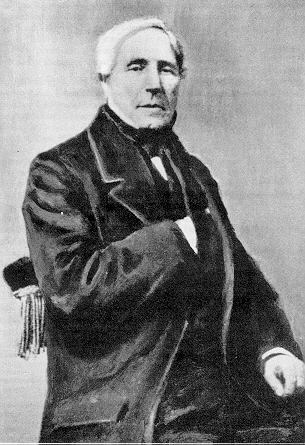<Back to Index>
- Physician Jean Louis Marie Poiseuille, 1797
- Writer Henry Fielding, 1707
- Senator of Belgium Henri Marie La Fontaine, 1854
PAGE SPONSOR

Jean Louis Marie Poiseuille (22 April 1797 - 26 December 1869) was a French physician and physiologist.
Poiseuille was born in Paris, France.
From 1815 to 1816 he studied at the École Polytechnique in Paris. He was trained in physics and mathematics. In 1828 he earned his D.Sc. degree with a dissertation entitled Recherches sur la force du coeur aortique. He was interested in the flow of human blood in narrow tubes. In 1838 he experimentally derived, and in 1840 and 1846 formulated and published, Poiseuille's law (now commonly known as the Hagen – Poiseuille equation, crediting Gotthilf Hagen as well). This concerns the voluminal laminar stationary flow of an incompressible uniform viscous liquid (so-called Newtonian fluid)
through a cylindrical tube with constant circular cross section. In
other words, it applies to non-turbulent flow of liquids through pipes.
It can be successfully applied to blood flow in capillaries and veins, to air flow in lung alveoli, for the flow through a drinking straw or through a hypodermic needle. where: ΔP is the pressure drop, L is the length of pipe, μ is the dynamic viscosity, Q is the volumetric flow rate, r is the radius and π is pi. The Poise, the unit of viscosity in the CGS system, was named after him. Attempts to introduce "Poiseuille" as the name of the SI unit Pa·s had little success. Poiseuille died in Paris on December 26, 1869.
